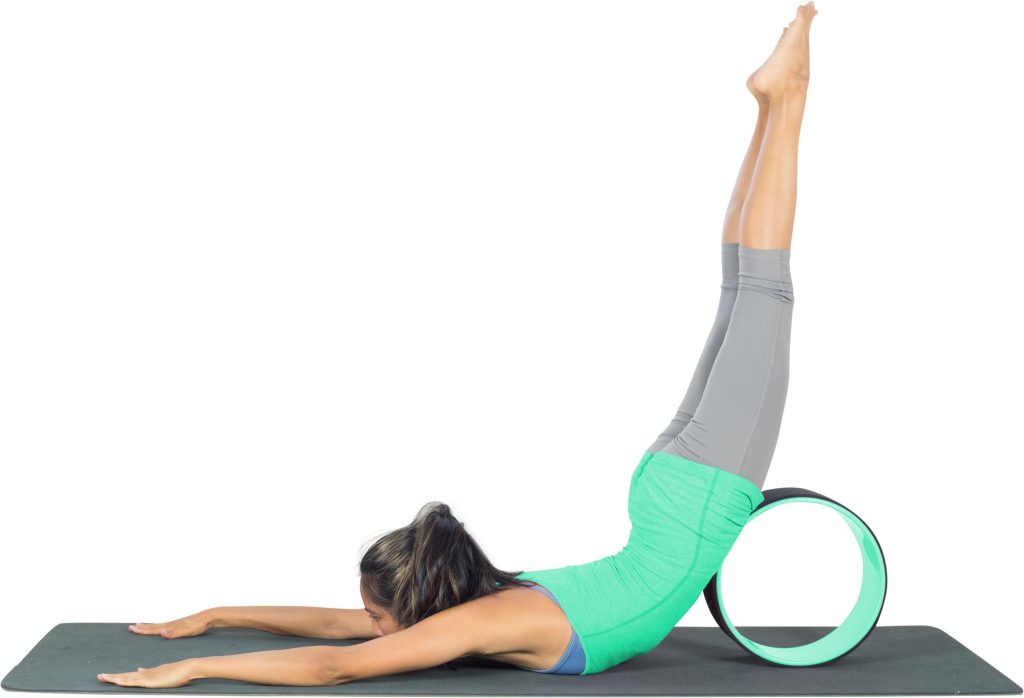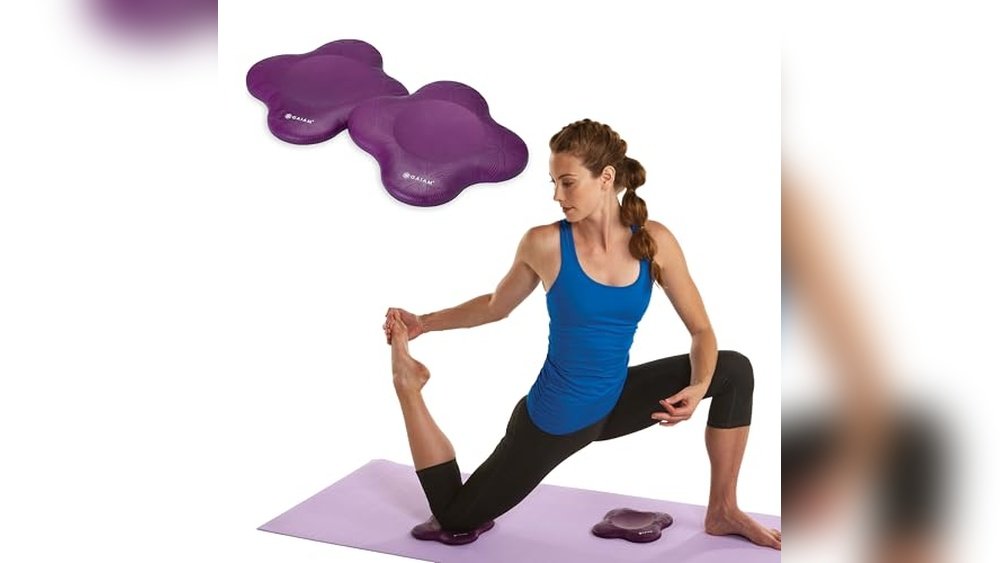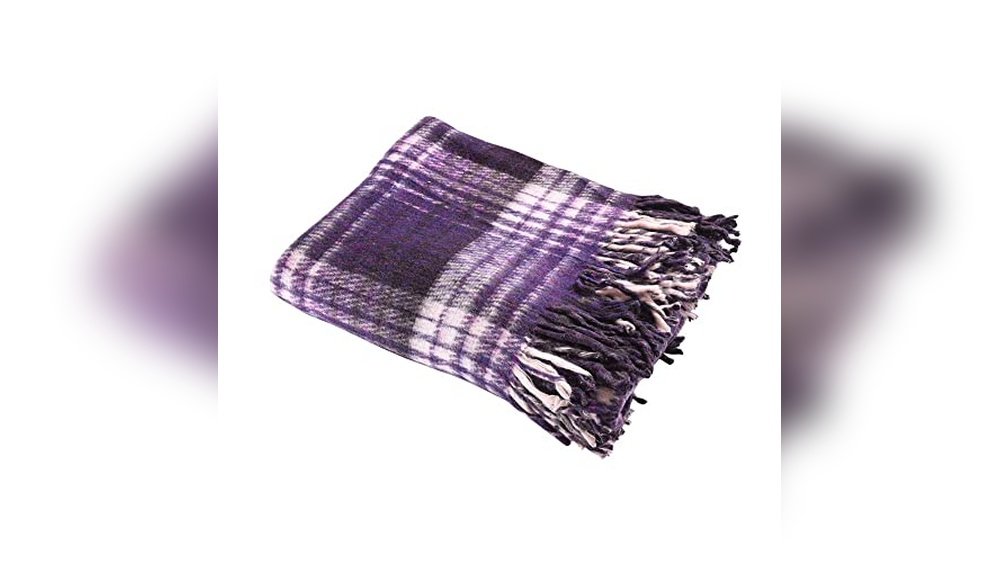Are you curious about how a yoga wheel can transform your practice? Whether you want to improve your flexibility, relieve tension, or add a fun challenge, the yoga wheel is a simple tool that can help you achieve your goals.
But if you’re new to it, you might wonder where to start and how to use it safely. This guide will walk you through everything you need to know as a beginner, so you can feel confident and get the most out of your yoga wheel right away.
Ready to unlock new possibilities in your practice? Let’s dive in.

Credit: m.youtube.com
Choosing The Right Yoga Wheel
Choosing the right yoga wheel helps you practice safely and enjoy your sessions. The right wheel fits your body and yoga style. It supports your stretches and helps with balance. Think about material, size, weight, and price before buying. These factors make a big difference in your yoga experience.
Material And Durability
Yoga wheels come in different materials like wood, plastic, and cork. Wood is strong and lasts long. Plastic wheels are light but may wear faster. Cork wheels offer a good grip and feel soft. Choose a material that suits your skin and practice style. Check if the wheel can hold your weight safely.
Size And Weight Considerations
Yoga wheels vary in size and weight. Larger wheels offer more support but are harder to carry. Smaller wheels are easy to move but give less balance. A wheel about 12 inches wide fits most beginners well. Lighter wheels are good for travel and quick moves. Pick a size and weight that feels comfortable for you.
Budget-friendly Options
You do not need to spend a lot on a good yoga wheel. Many affordable wheels offer good quality and safety. Look for wheels with good reviews and basic features. Avoid very cheap wheels that may break quickly. Set a budget and find the best wheel within it. Good wheels help you enjoy yoga without extra cost.
Preparing For Your First Session
Preparing for your first yoga wheel session helps you feel confident and safe. It sets the foundation for a smooth experience. Taking time to warm up your body, set up a clear space, and gather the right gear makes a big difference. This preparation reduces the risk of injury and helps you enjoy each stretch and pose.
Warm-up Exercises
Start with gentle movements to loosen your muscles. Try neck rolls, shoulder shrugs, and wrist stretches. Move into some cat-cow poses to warm up your spine. These exercises prepare your body for deeper stretches. Warm muscles respond better to the yoga wheel’s pressure.
Setting Up A Safe Space
Choose a quiet, open area free of sharp objects. Use a non-slip yoga mat to keep the wheel steady. Make sure there is enough room to roll the wheel around safely. Good lighting helps you see your posture clearly. A calm space helps you focus on your practice.
Essential Gear And Accessories
Wear comfortable clothes that allow easy movement. Avoid tight or restrictive fabrics. Use a yoga wheel with a soft but firm surface. Keep a small towel nearby to wipe sweat. Have a water bottle handy to stay hydrated. These simple items support a better session.
Basic Yoga Wheel Poses
The yoga wheel is a great tool for beginners. It helps improve flexibility and strength. Using basic poses builds confidence and prepares the body for advanced moves. Start slow and focus on form. The wheel supports the body, making stretches easier and safer.
Backbends And Chest Openers
Backbends are easier with the yoga wheel. Place the wheel behind your back and slowly lean into it. The wheel supports your spine as you open your chest. This pose reduces tension and improves posture. Hold the position for a few breaths. It helps release tight muscles and increases flexibility.
Balance And Stability Poses
The yoga wheel challenges your balance. Try standing or kneeling on it to build stability. These poses engage small muscles that keep you steady. Focus on slow, controlled movements. This practice strengthens your body and improves coordination. Use the wheel near a wall for extra safety.
Core Strengthening Moves
The wheel is excellent for core workouts. Sit on the floor and place the wheel under your hands. Roll it forward and back, keeping your core tight. This motion activates your abs and lower back. Strong core muscles support all yoga poses. Start with short sets and increase time gradually.

Credit: upcircleseven.com
Common Mistakes To Avoid
Using a yoga wheel can improve your flexibility and strength. Yet beginners often make mistakes that slow progress or cause injury. Avoiding these common errors helps you enjoy safe and effective practice. Focus on slow, mindful movements and listen to your body.
Overstretching And Injury Risks
Trying to stretch too far can hurt muscles and joints. The yoga wheel supports your back and spine, not force extreme bends. Move gently and stop if you feel sharp pain. Overstretching leads to strains and longer recovery time.
Ignoring Body Alignment
Proper alignment protects your body during poses. Keep your spine straight and shoulders relaxed. Misalignment stresses muscles and causes discomfort. Use a mirror or ask for help to check your form. Correct posture improves the wheel’s benefits.
Rushing Progress
Progress takes time with a yoga wheel. Avoid pushing yourself too fast. Slow, steady practice builds strength and flexibility safely. Skipping steps increases risk of injury and frustration. Celebrate small improvements and stay patient.
Building Confidence And Flexibility
Building confidence and flexibility with a yoga wheel takes time and patience. The wheel helps open tight muscles and improve balance. Beginners can feel unsure at first. Small, steady steps bring success. Using the wheel regularly makes movements easier and more natural. Progress happens bit by bit.
Consistent Practice Tips
Practice with the yoga wheel several times a week. Short sessions work well. Start with 5 to 10 minutes. Focus on comfort and control. Avoid pushing too hard. Use simple poses to build strength. Repeat each pose slowly. Consistency helps muscles adapt and grow.
Incorporating Breath Control
Breathing deeply improves your yoga wheel practice. Breathe in through the nose. Breathe out through the mouth. Match your breath to your movements. Slow, steady breaths relax muscles. Controlled breathing reduces fear. It helps you stay calm and focused. Breath control supports balance and flexibility.
Tracking Your Progress
Keep a simple journal or log. Write down how long you use the wheel. Note which poses feel easier. Record any new stretches or movements. Celebrate small improvements. Seeing progress boosts confidence. Tracking helps you stay motivated and aware. It shows how your flexibility grows over time.

Credit: evolvefitwear.com
Advanced Moves To Try Later
After getting comfortable with basic yoga wheel poses, you can try advanced moves. These poses help improve strength, balance, and flexibility. They bring new challenges and excitement to your practice. Take your time and listen to your body. Practice safely and enjoy the journey.
Inversions With The Wheel
Inversions flip your body upside down, boosting circulation and focus. Using the wheel adds support and helps keep balance. Start with gentle poses like supported headstands or shoulder stands. The wheel cushions your back and makes holding poses easier. Always practice near a wall or with a partner for safety.
Deep Backbends
The wheel helps open your chest and spine deeply. It supports your back while you stretch. Try poses like wheel-assisted bridge or full backbends. These moves improve posture and reduce tension in your shoulders. Move slowly and breathe deeply to avoid pain. Stop if you feel discomfort or strain.
Dynamic Flow Sequences
Flow sequences link poses smoothly and build strength. Use the wheel to transition between moves with control. Combine backbends, twists, and stretches for a full-body workout. Flowing helps increase endurance and coordination. Keep your movements steady and steady your breath throughout the sequence.
Frequently Asked Questions
What Is A Yoga Wheel Used For Beginners?
A yoga wheel helps improve flexibility and balance. Beginners use it to stretch muscles and open the chest safely. It supports backbends and enhances core strength. Using a yoga wheel gradually builds confidence in challenging poses.
How Do Beginners Start With A Yoga Wheel?
Start by placing the wheel under your back or hands. Use it to gently stretch and support your spine. Begin with basic poses like seated stretches and supported backbends. Practice regularly to improve flexibility and control.
Are Yoga Wheels Safe For Beginners?
Yes, yoga wheels are safe when used correctly. Beginners should follow tutorials and avoid pushing beyond comfort. Start slow and listen to your body. Using a yoga wheel can prevent injuries by offering controlled support.
Can A Yoga Wheel Improve Flexibility Quickly?
A yoga wheel can speed up flexibility improvements. It helps deepen stretches and releases muscle tension. Consistent practice, even a few minutes daily, can show noticeable results. Patience and proper technique are key for safe progress.
Conclusion
Using a yoga wheel can help improve your balance and flexibility. Start slow and listen to your body. Practice regularly to see steady progress. Enjoy the gentle stretch and support it offers. Always keep safety in mind during your practice.
With patience, you will feel more confident. A yoga wheel adds fun to your routine. Keep exploring new poses at your own pace. Yoga becomes more enjoyable with this helpful tool.


